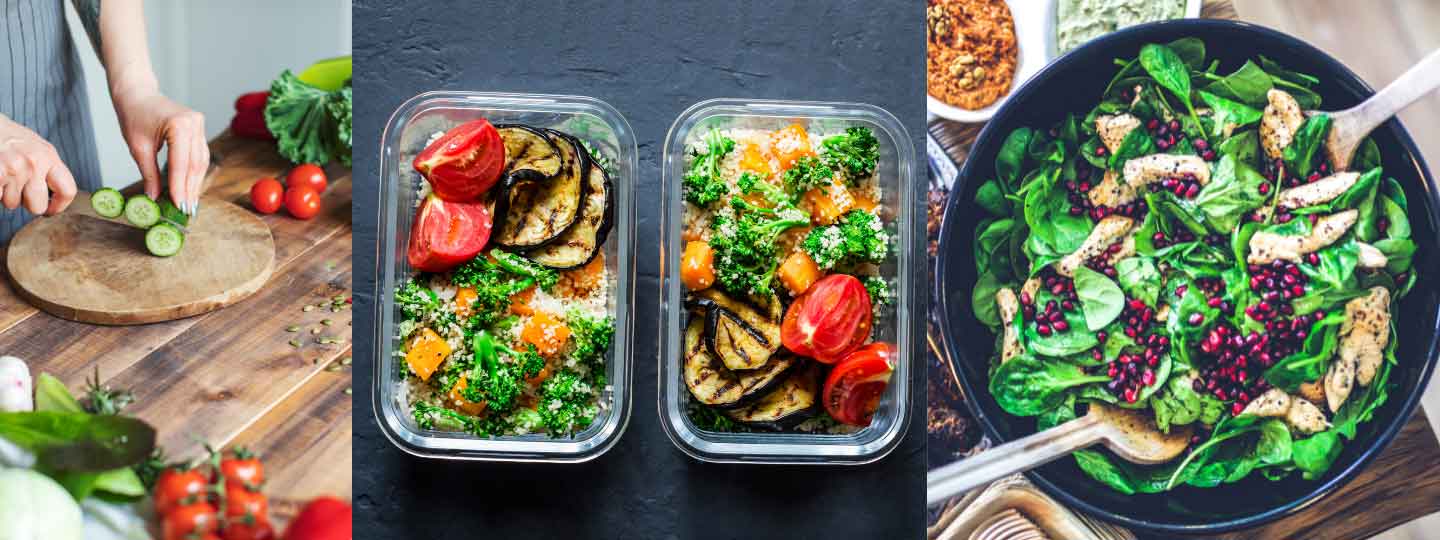Arthritis and kitchen hacks: easy ways to eat well
12 May 2021
Planning meals, pacing yourself and eating a healthy diet will help you keep your arthritis in check. Check out our top kitchen hacks and advice from people living with arthritis to get you started.
Making the most of your store cupboard
A well-stocked store cupboard is the first step towards being able to cook tasty and healthy meals. Here’s some easy ideas for you to try.
Use tinned sardines and mackerel for a boost of omega 3 fish oils, these work well in salads, with a baked potato or simply served on toast.
Tinned tomatoes are a versatile ingredient. You can make a big batch of tomato sauce and freeze portions to use when you are ready. It can work well as a base for pasta sauces, chilli or curry.
Why not experiment with spices such as turmeric, garlic and ginger to add more flavour? Some studies have shown that these can reduce inflammation and pain. Learn more about the different types of complementary treatments.
Love your freezer
Fruit and vegetables are the mainstay of a healthy diet and make dishes tasty. Many are also packed with nutrients but cutting and chopping can be painful.
You can use frozen fruit and veg which are already chopped and ready to be cooked and are much cheaper. They’re also great nutritionally.
“Avoid emptying heavy vegetable pans of water, put the veg in a colander and then put into the water to cook. Then use the veg water for soup stock.“
Frozen vegetables can sometimes have more nutrients in them than fresh and will count towards your five a day. Having a bag of peas in the freezer means you’ll never be short of a vegetable to serve with your main meals.
Check out Love Food, Hate Waste’s storage a-z for a guide on how to keep your food fresh for longer.
Quick tips and gadgets
The Living Made Easy website gives helpful advice on gadgets and equipment to make everyday activities easier.
Here's some suggestions you've shared with us:
- An electric tin opener is a must.
- Microwave cooking where possible. It uses less water and the cooking containers could be two handled.
- Lightweight pans are easier to lift and double handled are easier to handle.
- Use an electric steamer to cook veg, or put a colander in your pan so there's no need to lift the pan to strain water
- Try using a lighter travel kettle.
- Cut up food with scissors, it can be easier than using a knife.
- You can buy adapted cutlery that you can grip more easily, and a chopping board with spikes at the bottom which are non-slip on kitchen surfaces.
Trying easy and healthy recipes
Quick and easy recipes are always good to have in your repertoire, but even more so when you’re self-isolating, shielding or following the current advice to stay at home.
Take a look at recipes from our Inspire magazine, these include a range of simple family dishes to no-bake mini cheesecakes.
Check out our online community and read store cupboard thread for more foodie inspiration.
Taking a seat
Set up prepping and cooking stations in your kitchen, so everything is on hand and at the right level. Look at the task and see how you can break it down to individual components, so that you can conserve your energy.
For instance, if your bowls, knives and chopping boards are all in different areas of the kitchen, pull them into one useful area. That way, you don’t have to move around very much, making cooking that bit easier. Have an area where you can sit down and work on the kitchen counter, or have a low table and chair, so you don’t have to stand for long periods.
Every little helps
Slow cookers can do all the work for you; you can throw in meat and/or veg and let the cooker do the rest.
If you struggle to cook, but still want to eat homemade meals, one way is to cook a big meal, or several if you have the energy on that day, then divide them up and freeze them. That way, on the other days in the week, you can use your energy to do another activity. Your meals will already be prepared, just get them out of the freezer when you need them.
Share your experiences to help others
Suzette was diagnosed with osteoarthritis in 2013. It affected mainly her spine and hips and made going about her normal life very painful.
When she started to research more about the Mediterranean diet and which foods might help decrease her arthritis symptoms. This helped her to feel better informed and how diet could play a positive role in her journey back to wellness.
She says: “My GP prescribed various painkillers, but I didn’t take well to them.
“The physiotherapist also gave me a booklet on eating well which mentioned the link between food and arthritis symptoms. The main recommendation was to adopt a more Mediterranean-style diet.
“This really struck a chord with me. Firstly, as I was born in Gibraltar, I already had a good understanding of what was meant by eating in a Mediterranean way. Secondly, the notion that symptoms could be improved by eating certain foods was very edifying.
“I already had quite a healthy diet and cooked mainly from scratch. The main changes I made were to considerably increase my intake of extra virgin olive oil, garlic, oily fish, walnuts, almonds, ginger and raw salads. I also cut down on those foods I knew worsened my symptoms.”
We’re here for you
- If you would like to talk to someone, you can call our free helpline on 0800 5200 520
- Join our online community
- Stay in touch and follow us on Twitter, Facebook and Instagram.